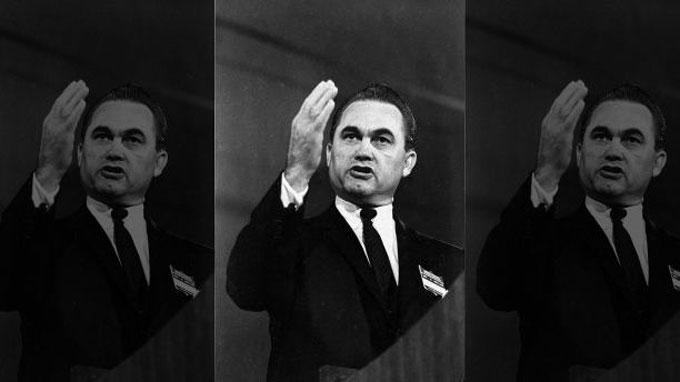John Steinbeck’s expression of ambivalence about America and Americans in Travels with Charley proved to be prophetic. In the presidential campaign of 1968, the year Steinbeck died, Richard Nixon co-opted Alabama’s segregationist governor, George Wallace—Nixon’s rival for the Southern white vote—and embraced the anger exemplified by the screaming mothers blocking the path of African American girls on the way to school in Steinbeck’s story. Forging Nixon’s path to the White House through the heart of the Confederacy paved the way for Donald Trump, Wallace and Nixon’s political heir, in 2016. The spring issue of the scholarly journal Steinbeck Review suggests that the road to recovery from Trump began in 2017 with the defeat of Trump’s candidate Roy Moore by Democrat Doug Jones in Alabama, and that John Steinbeck first diagnosed the condition of America and Americans in his 1938 novella-play Of Mice and Men.
Driving Highway 31 Through George Wallace’s Alabama
Barbara Heavilin, the journal’s editor in chief, lives in northern Alabama and wrote a column recounting the race to replace Jeff Sessions, Donald Trump’s masochistic Mini-Me, as the junior U.S. Senator from the state. Moore, a Bible-spouting jurist, has an injudicious past, and opponents calling themselves Highway 31 organized money and volunteers around Jones, the federal attorney who prosecuted perpetrators of the Birmingham church bombing that killed four black girls less than a year after Travels with Charley was published. “They chose a good title for themselves, for Highway 31 is the old North-South route through the state before the advent of U.S. 65,” Heavilin wrote. “It winds through lovely little Gardendale with its neat rows of crepe myrtles down the center of the median, going through the middle of town, where I live and where the local high school is in pitted battle in the courts, demanding independence from Jefferson County [because it] would bring about a return to a type of segregation.”
Scaling the “Wall of Understanding” in Of Mice and Men
The editor of Steinbeck Review knew her readers would enjoy the Steinbeck symbolism in her true-life story, which has the advantage over John Steinbeck’s fiction of featuring a known outcome with a happy ending. As shown by the ambiguous conclusions of In Dubious Battle and The Grapes of Wrath, Steinbeck was dubious about the outcome of political battles in his own day. Doug Jones may have reminded Alabama voters of Atticus Finch, the Alabama lawyer who defends the black man in Harper Lee’s 1960 novel, but heroes and happy endings are sparse in Steinbeck’s fiction, and Of Mice and Men is typical. To the eternal edification of readers with inquiring minds and open hearts, it dramatizes the failings of America—and Americans victimized by poverty, disability, racism, ageism, and misogyny—against the backdrop of fascism, fake science, and the breakdown of world order. Steinbeck described this context as the “wall of understanding,” and the phrase fits perfectly.
John Steinbeck’s Antidote for Donald Trump’s Toxicity
Conceived with a wall of understanding that encompassed cold war, public corruption, environmental degradation, and anti-immigrant hysteria, the books about America written by John Steinbeck in the 1960s—The Winter of Our Discontent, Travels with Charley, America and Americans—completed the catalog of outrage, abdication, and abuse personified by the cast of characters who animate Of Mice and Men. Our wall of understanding now includes real walls built to bar Mexicans, Canadians, and America’s European allies, adding urgency to our reading of Steinbeck, who saw a dictator when he looked at demagogues like Huey Long during the Depression and despaired when Richard Nixon won in 1968. Donald was around and dodging the draft at the time, but if Steinbeck imagined a disaster like Trump in America’s future before he died he didn’t say so. Instead, he concentrated on symptoms of decline and the curative power of empathy for America and Americans in any age. As Barbara Heavilin reminds us in her encouraging editorial, the road to recovery starts with understanding and runs through Alabama.
We are suspending weekly posts on a temporary basis to pursue a print project requiring our time and attention. We will continue to answer messages, curate comments, and post news of conferences, publications, and opportunities when brought to our attention. Guest-author submissions will be considered in the order they are received once we resume the weekly schedule maintained since SteinbeckNow.com began five years ago. Thank you for your understanding and cooperation.—Ed.





